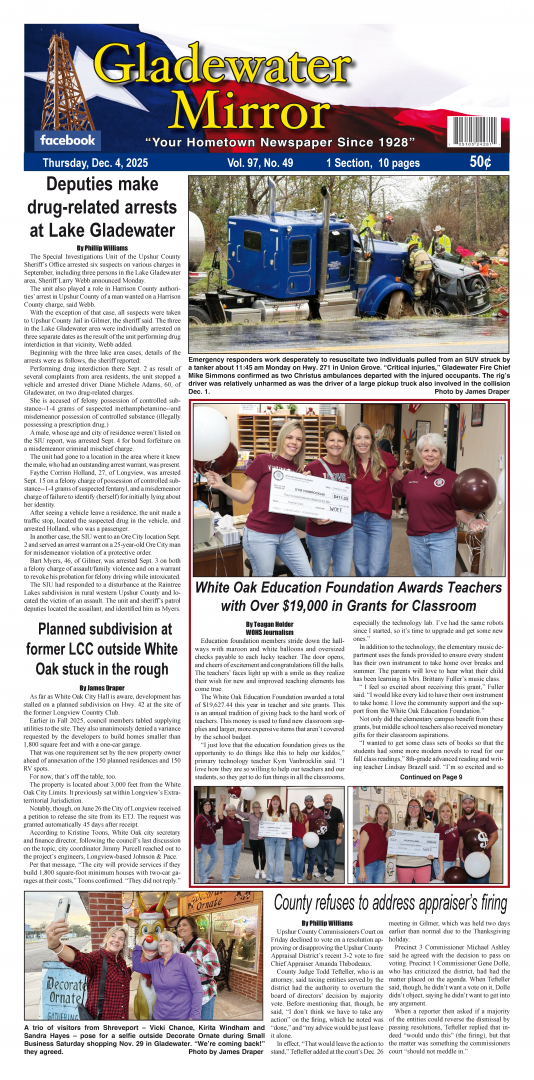The water’s safe to drink, but the City of Gladewater was recently notified of a ‘Maximum Contaminant Level Violation’ for excess chlorine residuals in its lines.
Per city officials, a mitigation plan was already in place when the notice arrived last month, and it’s underway now and for the long-term.
The scolding from Texas Commission on Environmental Quality follows a first quarter sampling for 2024 that registered total trihalomethanes at 0.084 milligrams per liter (mg/L) and 0.083 mg/L in two places. The numbers are about five percent more than the federal Environmental Protection Agency’s cap of 0.080 mg/L.
Per the city’s release about the violation, “Trihalomethanes are a group of volatile organic compounds that are formed when chlorine, added to the water during the treatment process for disinfection, reacts with naturally-occurring organic matter in the water.” Notably, “Some people who drink water containing trihalomethanes in excess of the (Maximum Contaminant Level) over many years may experience problems with their liver, kidney, or central nervous systems, and may have an increased risk of getting cancer.”
There’s no need to use an alternative water supply, and the city is taking standard corrective action for the issue by regularly flushing hydrants throughout the city.
“If I weren’t in the water industry, I would be asking the same questions,” says Wendy Emmel, Water Plant Manager for the City of Gladewater. Fortunately, the answers are pretty straightforward.
Per Emmel, trihalomethanes are a disinfection byproduct caused by the interaction of chlorine and organic remnants in the water.
“We remove as much of the organic material from the water that we can,” Emmel said. Granted, “No plant is 100 percent efficient. You dose the chlorine into the water after you’ve done all your filtration.”
Further down the line, if water sits too long in a pipe or is warmed too much within the system, THMs are produced. In this instance, the former explanation’s the cause – in the midst of freezing weather and a subsequent rash of breaks in recent months, water lingered overlong in sections of the lines.
“We weren’t able to do any flushing hardly. Especially with the lines breaking and the turnover of personnel, it couldn’t be done,” she said. “The water would sit in the dead-end areas. It wouldn’t move.”
One of TCEQ’s third-party contractors came amid the freeze to meet local water plant personnel at sampling points.
“A few days after the ice, they came back. They collected from areas that are prone to have THMs if the water is sitting there for a while.”
The next sampling will come in April, and Gladewater City Manager Charlie Smith’s as eager as anyone to see the THM numbers drop.
“It’s so minute, but it looks terrible,” he said. Beyond the lapse in flushing, the issue does illustrate another weakness of the city’s aging system: “We have to flush those things periodically to get the old water out and just keep it circulated. One of the main goals is to always try to loop your dead-end lines in so you don’t have that issue where you have to flush lines.
“With all the transition in the water plant that was going on with personnel, some of those didn’t get flushed as often as they needed to be. That problem has been resolved, and we are flushing lines periodically like we’re supposed to be doing.”
(Photo Illustration)









